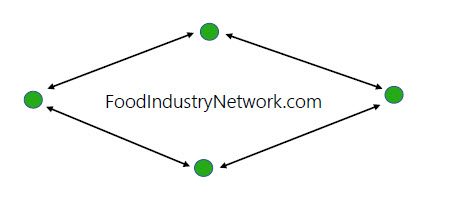ANALYSIS: U.S. auto sector tariffs an “own goal”

Glacier FarmMedia—In what seemed to be a hastily called press conference on Wednesday, March 26, the U.S. president announced a 25 per cent tariff will be imposed on all autos manufactured outside of that country. The announcement was short on specifics as to how it could be imposed on the highly integrated North American auto sector, which relies on inputs of components from all three countries going to various assembly locations.
Additional and sometimes confusing information began to slowly filter out from the U.S administration later in the day.
Read Also

Farmland becoming less affordable: FCC
Buying farmland became more costly in 2024, according to Farm Credit Canada.
A ‘monkey with a machine gun’
“It’s like a monkey with a machine gun, they’re going in all different directions,” said Automotive Parts Manufacturers’ Association president Flavio Volpe during a televised interview on CBC the next day. “The fact they don’t understand this or don’t care is going to crash the U.S. auto sector.”
The belief this tariff would seriously harm the auto industry in all three countries was reiterated by University of Toronto professor Dimitry Anastakis, who spoke on an Energy Media podcast on Thursday.
“This is going to go down as one of the greatest own goals in economic and policy history. This is crazy.
“The auto industry is one of the most competitive and difficult industries in the world in the best of times. When you add in that we’re trying to make this transition from an ICE (Internal Combustion Engine) to EV (Electric Vehicle) future and face competition like China, which is already so far along, to turn around and disrupt and insert so much chaos into the North American sector when legacy manufacturers like Ford and Stellantis are just trying to catch up is asinine.”
According to Cox Automotive’s senior economist Jonathan Smoke, who spoke on an industry insights and sales forecast call, the tariffs will cause a significant reduction in industry output, raising new and used vehicle prices and force the elimination of some vehicle models.
“If there are no carveouts for autos, the tariffs would add $3,000 to U.S. made cars, and $6,000 or more on a vehicle assembled in Canada or Mexico. If tariffs go through this time, by mid April we expect disruption to all North American vehicle production, amounting to 20,000 fewer vehicles produced per day, which is about a 30 per cent hit to production.”
Disrupted production
The uncertainty caused by the on-again-off-again tariff threat has already disrupted production of some vehicles and slowed or stopped capital investments.
“A few weeks ago Ford announced it was going to delay the next generation F-150 because of all the chaos around tariffs that Trump has created,” said Anastakis. “So it’s not just hurting EV rollout, it’s hurting the very manufacturers Trump was supposed to protect and support.”
The goal of the tariffs, according to the U.S. president, is to bring automotive manufacturing back to the U.S. But currently there are about 700 different manufacturers in Ontario alone that supply components to the auto sector. Then there are many more in Mexico. It’s improbable to think they can all relocate to the U.S. in the short term to avoid tariffs.
Experts generally doubt the U.S. could ever return to the kind of manufacturing economy it had in the 1950s, especially when it comes to automotive production. Not all of those needed support sectors could operate economically in the U.S.
“There are some specializations in Canada,” said Anastakis. “Whether it’s tool and die, mold manufacturers, aluminum production — you cannot replicate that in the States. So these border tariffs are going to have a tremendous impact.”
Transition to electric vehicles
A critical goal for future viability of North American auto companies is to catch up to China in the transition to electric vehicles. China has all the resources it needs to form a complete supply chain in that production cycle, from raw materials through to manufacturing facilities. That gives it a key advantage in the EV market.
However, Canada was set to play a key role in bringing similar advantages to North American companies. It has critical minerals as well as new production facilities.
“When I saw this announcement that they were going to go through with this on automotive, I said to myself, ‘they’re popping champagne in Beijing,’” added Anastakis. “The United States hobbled its own industry without the Chinese having to lift a finger.
“There’s a very good chance in 10 years we’re all going to be driving Chinese EVs, whether they’re made in China or elsewhere in the world, because this is a pivot moment, it’s a paradigm shifting moment. I don’t know how the industry is able to recover from this, when they’re already facing such incredible burdens to begin with.”
“We’re at an interesting crossroads today in 2025,” agreed Smoke. “The problem is a substantial change in trade policy due to tariffs will be highly disruptive to North American vehicle production.”
Said Volpe: “Maybe he (Trump) has to send the U.S. over the edge, have hundreds of thousands of auto workers at home before he understands the depth of the problem he’s caused.”
Source: Farmtario.com


